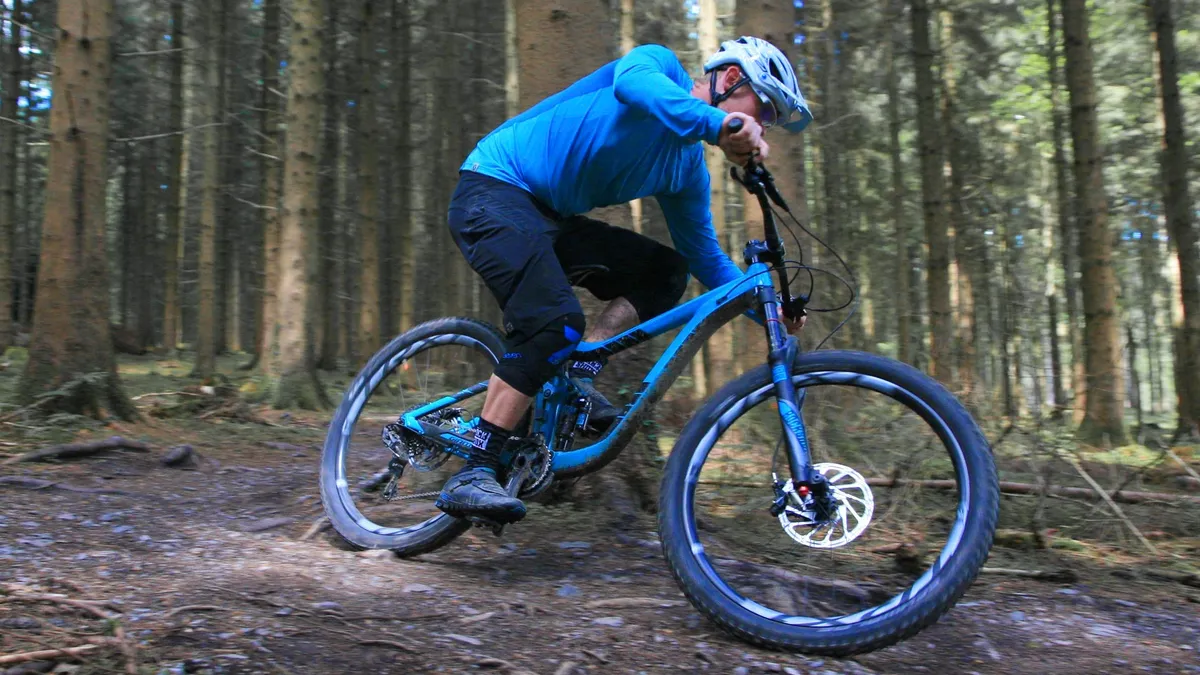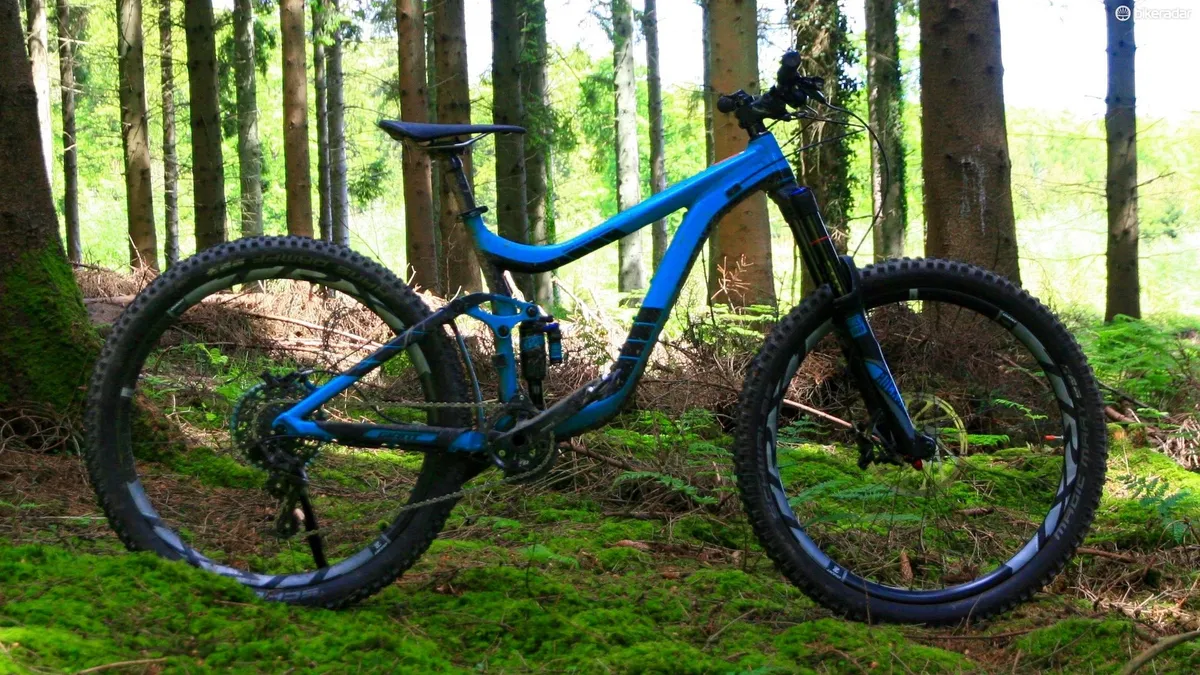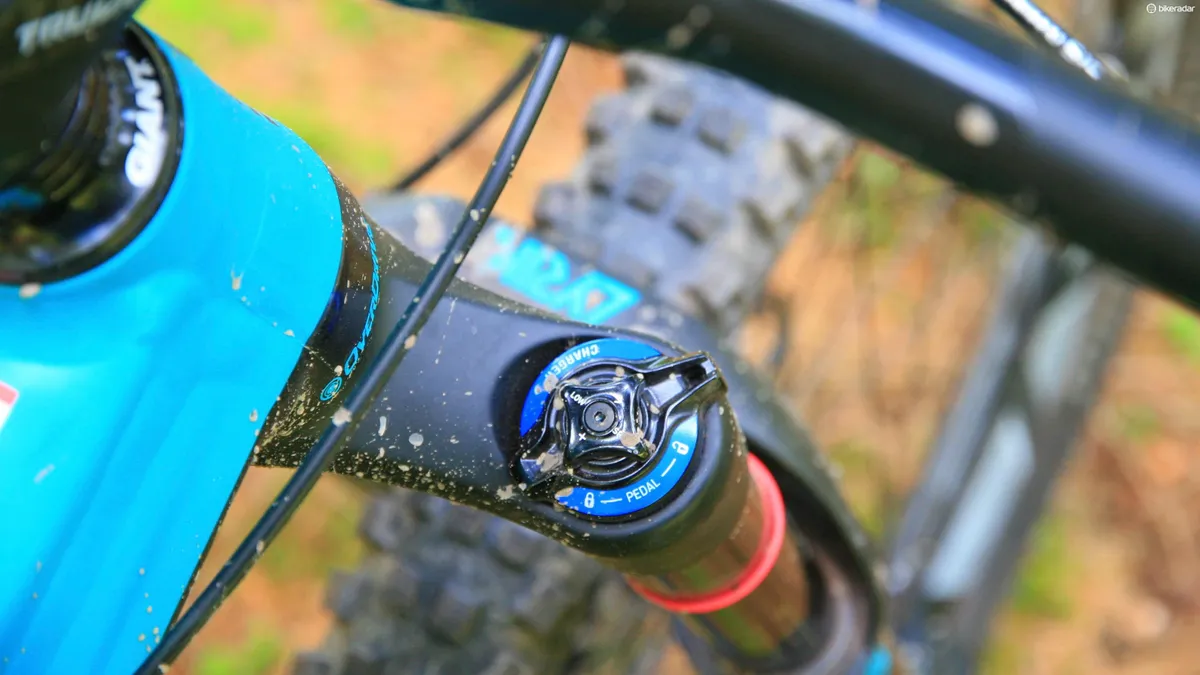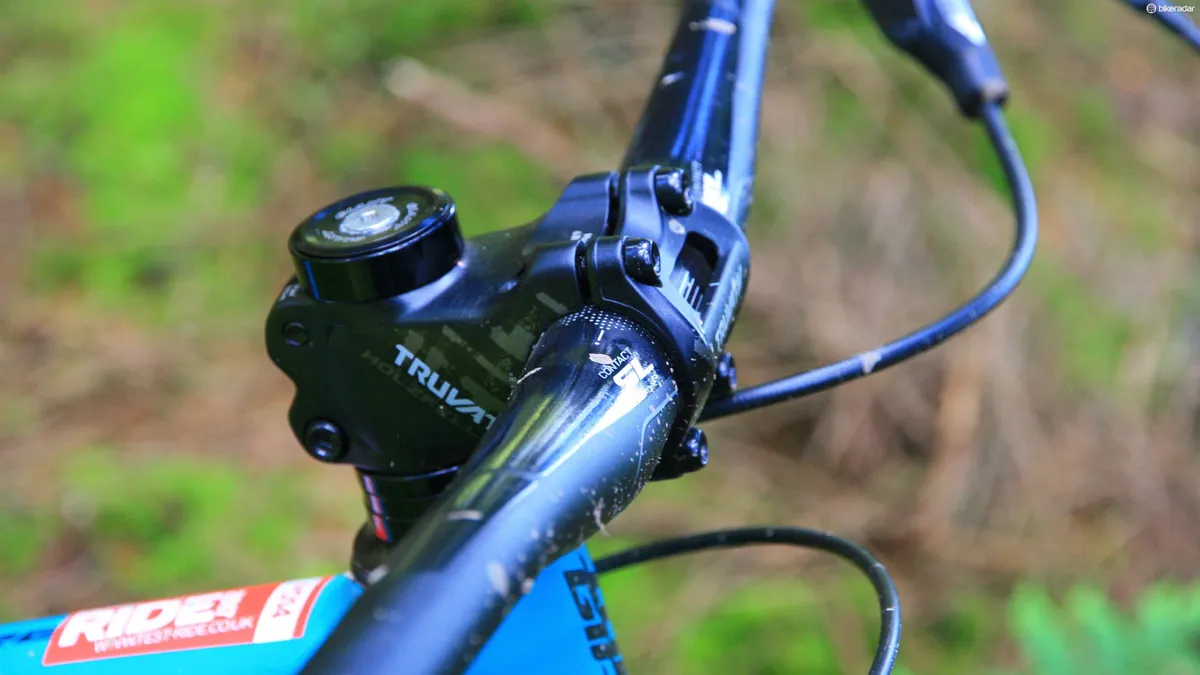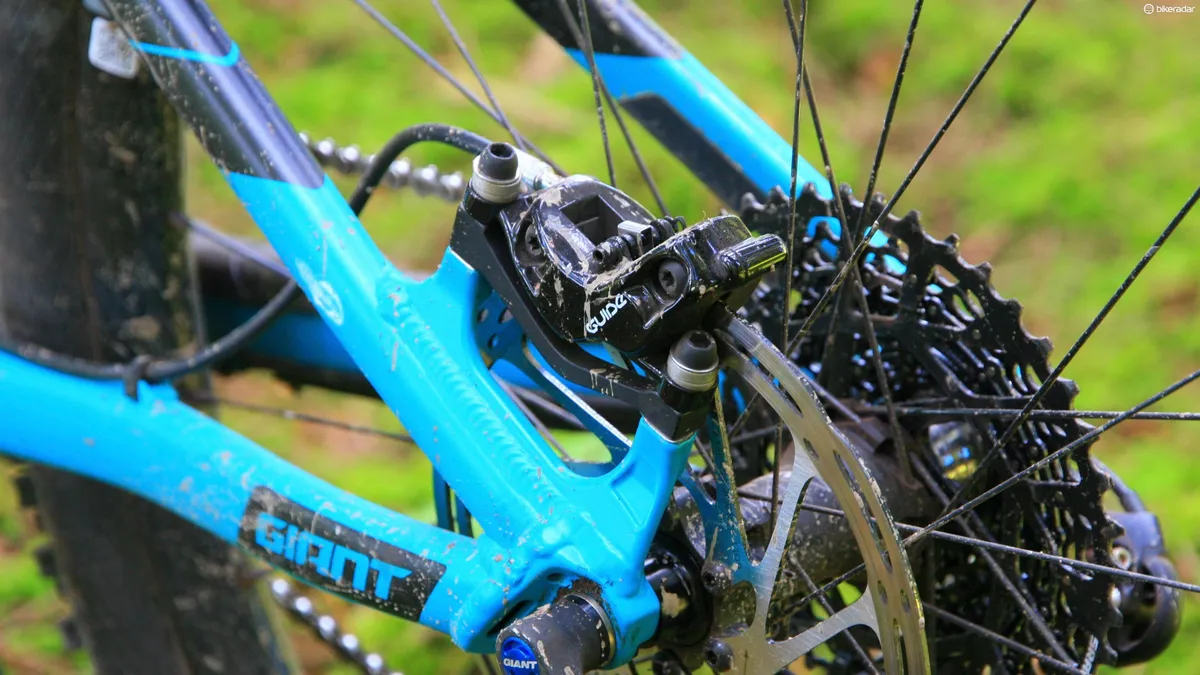Giant's longer travel Reign model has been around for a while now, sitting between the trail orientated Trance and the DH Glory. Rather than bring out step-change new models and framesets, Giant has worked to refine its models over the years, so the heritage is easy to follow. The brand has also stuck doggedly to its Maestro suspension system for its premium line of bikes, and this is no bad thing.
The Reign 1 is Giant's top alloy model, sitting above the Reign 2, and below the Advanced carbon models. Sadly in the US, buyers only have the lower-end Reign to choose from if they want an alloy bike, which is comparable to the Reign 2 in the UK and Australia.
The details
The Reign has 160mm of travel out back, which is matched up front for a balanced ride, and the Maestro suspension is controlled by a RockShox Monarch Plus Debonair RC3 shock — a high-end model which is a stellar performer.
The piggyback design gives more consistent control on prolonged descents, due to there being more oil volume to soak up the heat gain, while the larger Debonair air can provides better suppleness and mid-stroke support.
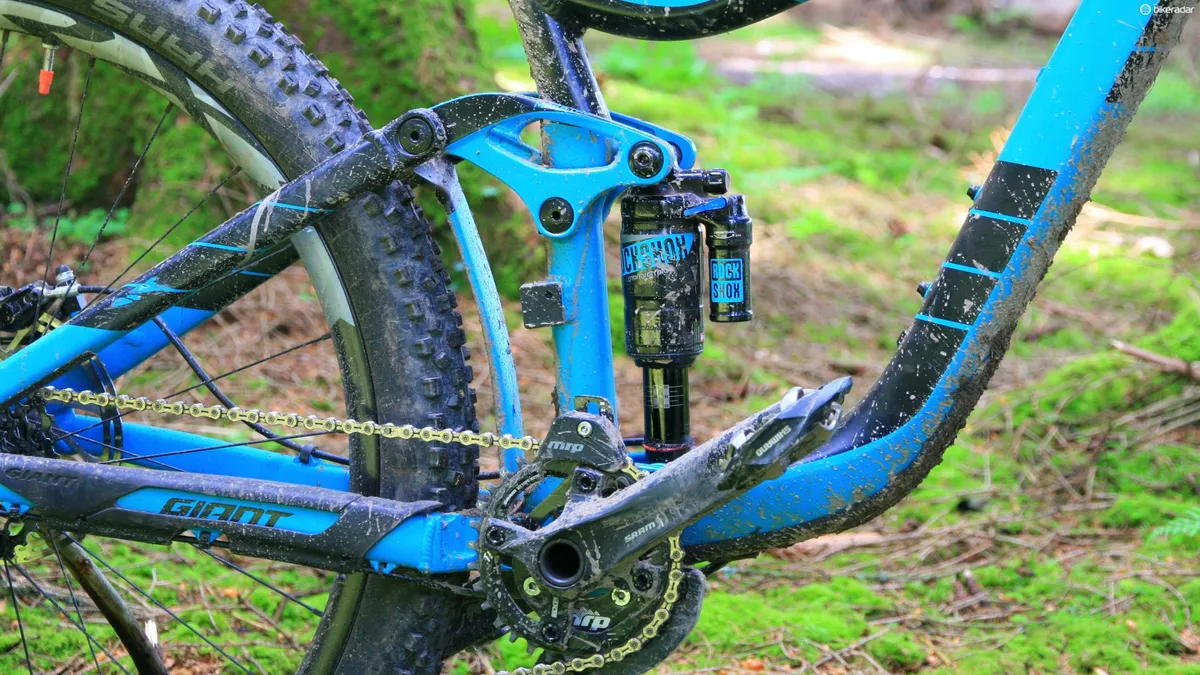
The RockShox Lyrik RCT3 fork is another top performer. The 35mm chassis is incredibly stiff and controlled, while there's the damping to back it up too — in short, Giant has got the Reign's suspension dialled.
Giant uses its own TRX 1 Composite wheels with a Boost spaced front hub and regular 12x142mm rear. The wheels are relatively stiff and light, so transfer power well, giving the bike a reasonably sprightly feel when accelerating out of corners. Fortunately, they aren't too harsh despite their depth.
These are shod in Schwalbe Magic Mary and Hans Dampf tyres, both in 2.35" width. The Magic Mary up front has the TrailStar compound, which is relatively soft and grippy, while the Hans Dampf at the back is PaceStar, a harder compound designed to roll faster.
The combo works well on a wide range of surfaces, with their large volume adding traction and comfort; while the wide-ish rims offer decent levels of support, preventing too much squirming.
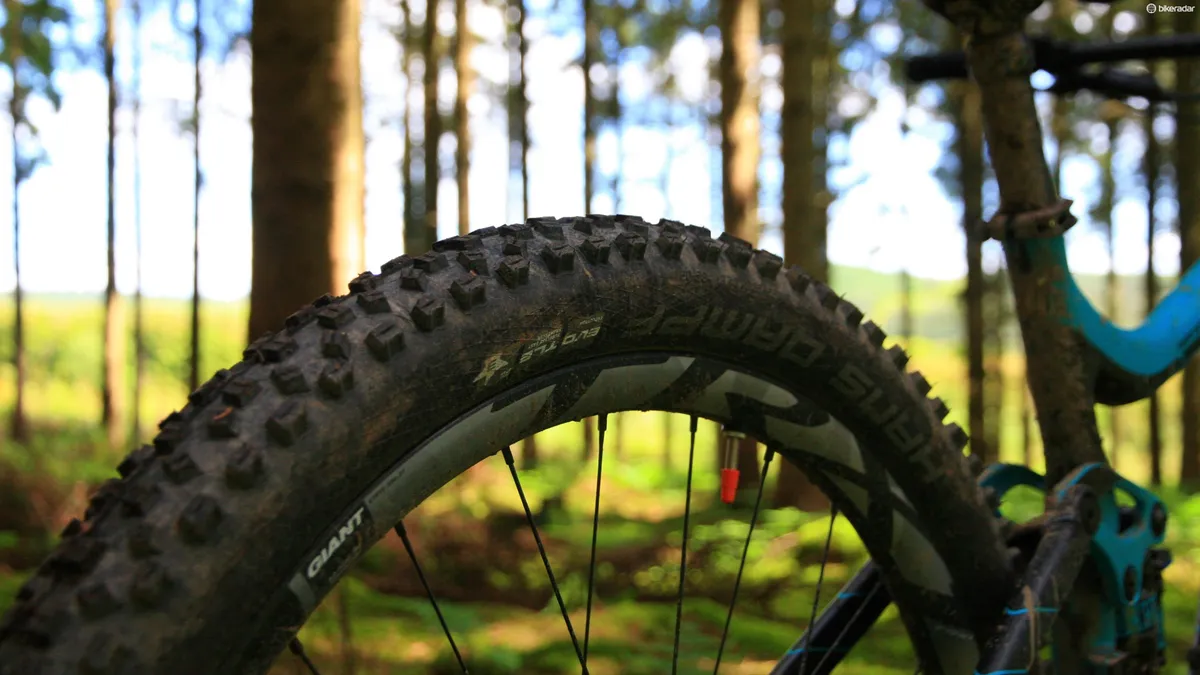
The bike is driven along by a mixed GX / X1 11-speed drivetrain from SRAM, while it's stopped by SRAM Guide RS brakes with a 200mm rotor at the front and 180mm at the back.
Giant's own Contact SL Switch Trail dropper post is a decent, if not amazing performer. I'm not a huge fan of the stubby lever and I'd like more than 125mm of drop on the Medium and Large sizes (Small gets just 100mm, while XL gets 150mm).
I'd like to see the 150mm used on all but the smallest bike, perhaps with a lower seat tube.
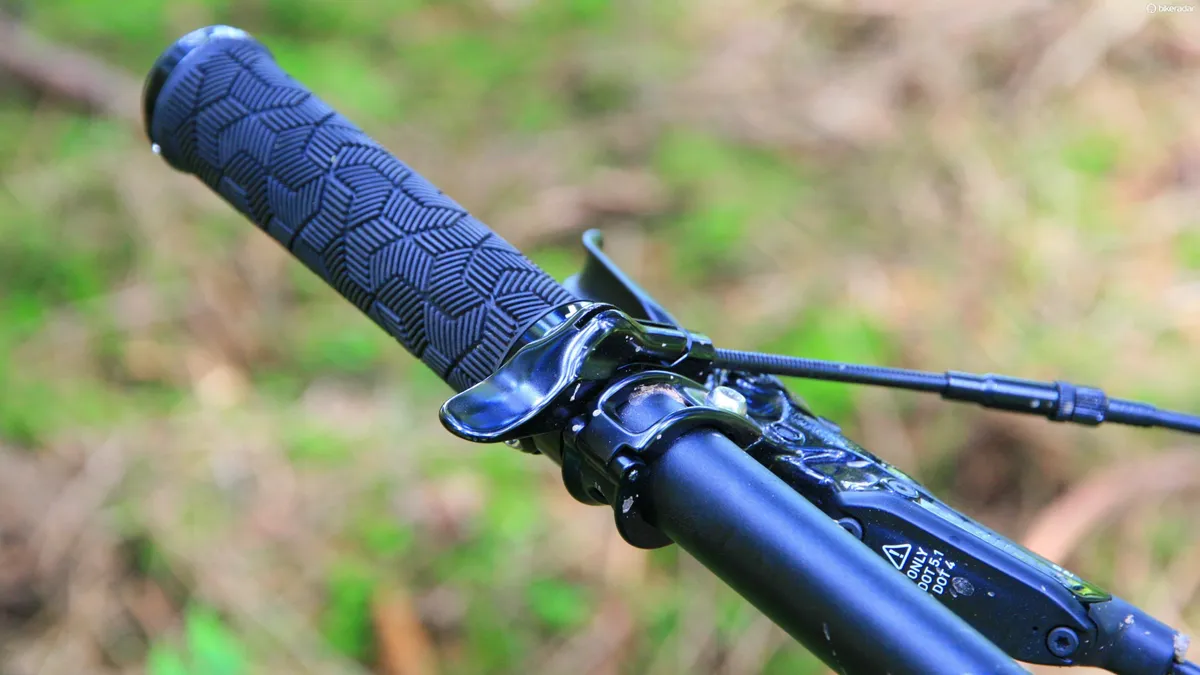
Geometry
Giant's geometry is pretty much on-point, but isn't pushed to any extremes. The head angle is 65 degrees, while the reach in a medium is 444mm.
The head angle is pretty much what I'd expect from an enduro bike; slack enough to give confidence and stability on steeper terrain, but not so slack as to feel like a barge on slower speed stuff. That said, the latest breed of enduro bikes are starting to push things on the slackness front.
Just how different are men's and women's bikes? We tested the Giant Reign against the Liv Hail to find out
The 444mm reach isn't particularly revolutionary, but it's pretty much middle of the road and hard to criticise in terms of the market as a whole. Were it a touch longer, when things get rough, loose and steep, some additional confidence might be found.
The 434mm chainstays give a nice balanced shape to the bike — they aren't super short, but combined with the average front centre give a wheelbase of 1,191, which is on par with its competitors.
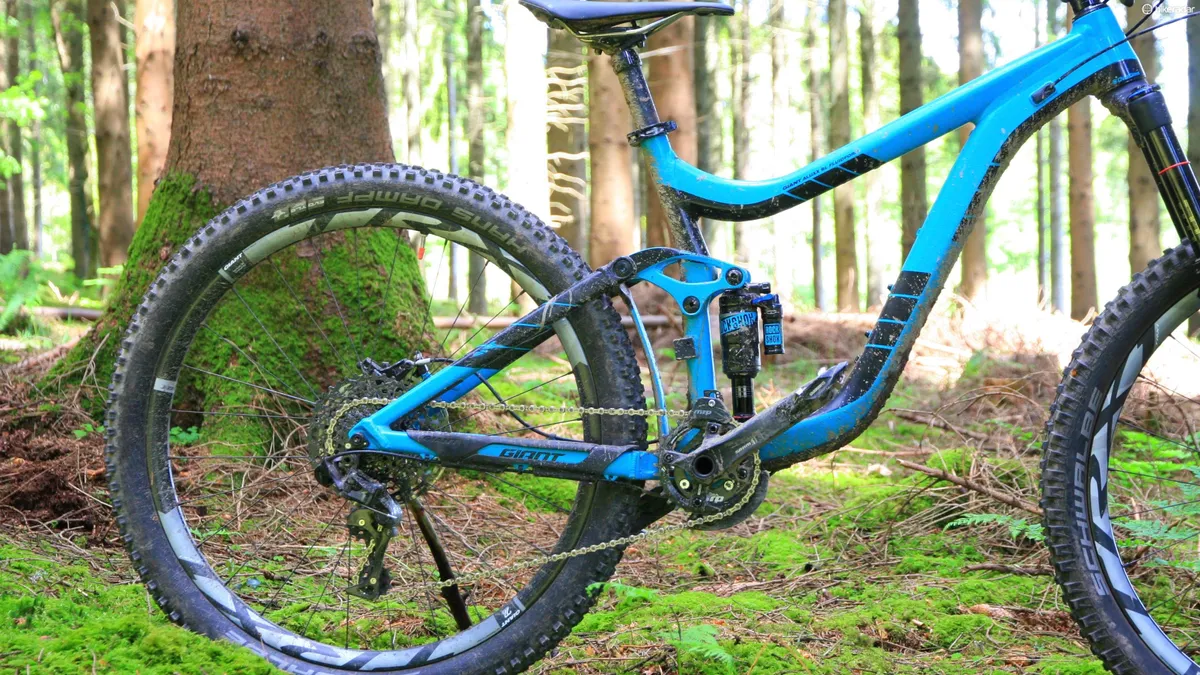
With a seat angle of 73 degrees, it's easy to find yourself with a touch too much weight over the back wheel on steep climbs. I'd like to see it in the 74–75 degree range.
Yes, a degree might not sound much, but in this area the difference is noticeable. Moving your hips over the cranks makes for slightly more efficient pedalling (just look at a TT bike for the extremes!), and also helps weight the front on steep climbs, preventing the front end feeling light.
Giant Reign 1 ride impression
It's easy to see why Giant has stuck with Maestro for so long. It's not a super showy, flashy system, but one that just gets on with the job. Whether it's negotiating a matted bed of roots or sending it off drops and jumps, it just sits there and deals with whatever the rear wheel throws at it, without throwing its toys out of the pram. There's no sudden pedal kickback on drops or choking on stutter bumps.
When the trail points up, it's just about neutral enough to resist reaching down to the compression lever on the shock on all but the smoothest, long climbs. That said, it's definitely a bike for spinning up on rather than thrashing out of the saddle.
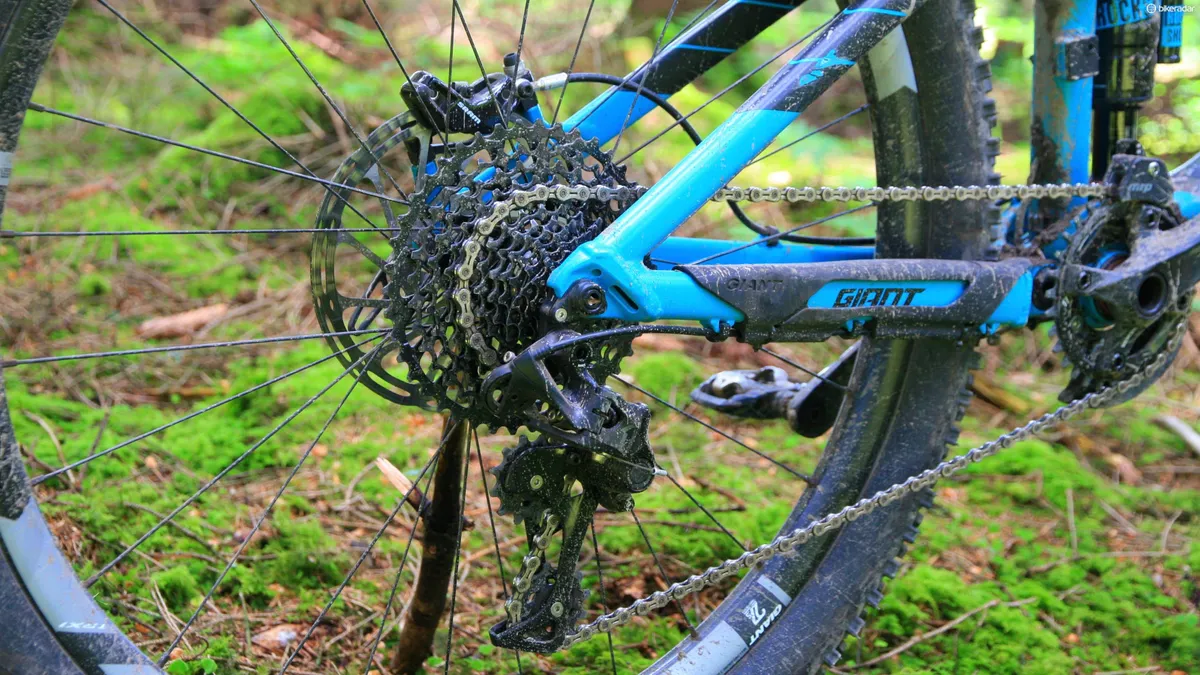
The suspension boosts off-road climbing — with the linkage design and shock working well together to give acres of traction. However, I'd like to see that steeper seat angle to improve pedalling efficiency and weight distribution.
The Monarch Plus is as controlled and composed as you'd like, along with having plenty of adjustment and tuning capabilities. Likewise, the Lyrik up front just gets the job done.
With the stiff wheels and grippy tyre up front, it's a bike that inspires confidence when you shove it into a loose, steep corner. The support offered by the Lyrik in its mid-stroke makes light work of steep chutes too, resisting the desire to dive through its travel and pitch you out the front.
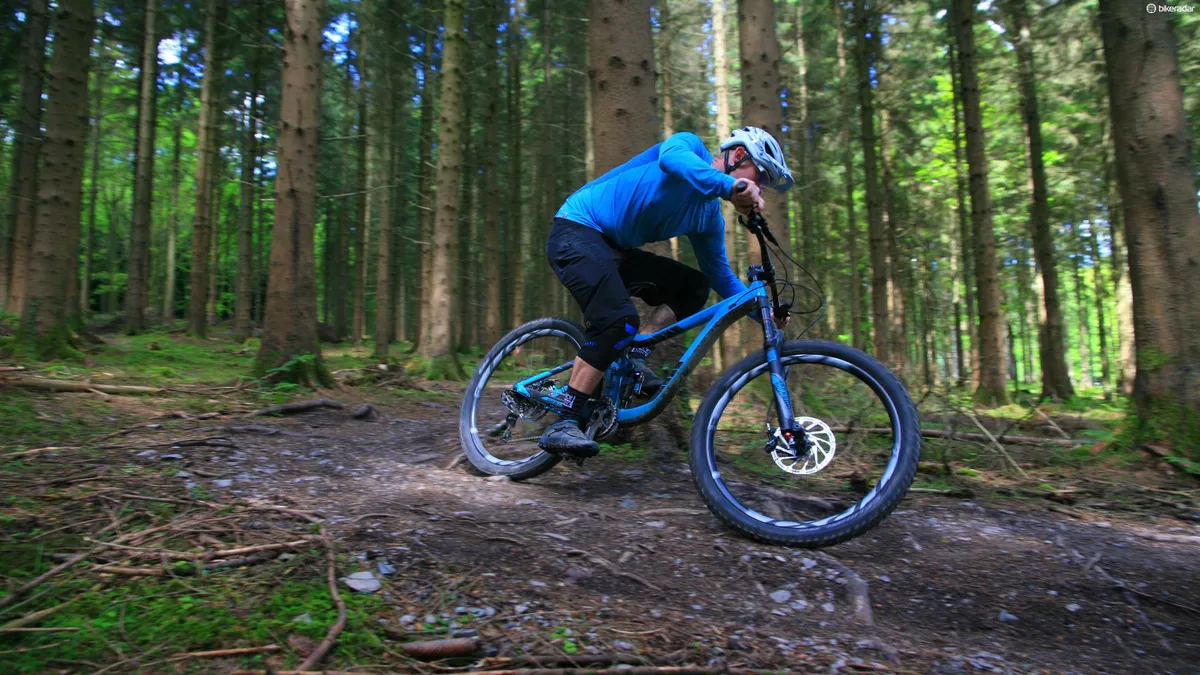
While the fork props the bike up in super-steep terrain, the shape is great on fast, flowy trails, with it being eager to change direction and pop over obstacles.
The 10mm bottom bracket drop is fair, rather than massive, but it still lets you drop the bike low into corners, allowing the side knobs on the tyres to dig in and guide you round the arc.
It's a bike you sit in, rather than on-top off; and combined with the suspension, it's an incredibly confident bike.
